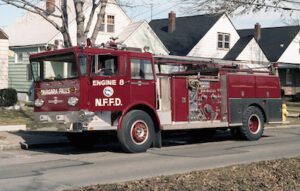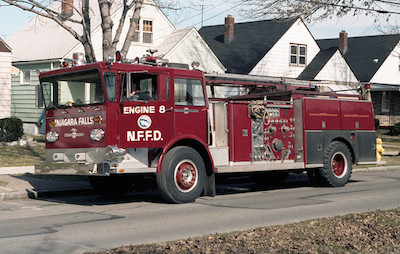
With a new apparatus ranging anywhere in price from $100,000 to over $1,000,000, you can be sure that your department will be looking to maximize its investment and squeeze every possible hour of service out of your vehicles. That being said, when an apparatus is approaching the end of its effective life expectancy, it isn’t always easy to determine whether or not it needs to be replaced. Sure it might not perform like it did fresh off the factory room floor 10-15 years ago, but do you really need to spend all that money and go through the process of replacing it just yet? Would it be more feasible to just repair the apparatus?
With budgets running tight, and the well being of your community riding on the dependability of your truck, it’s often hard for fire departments to decide whether or not a new truck is needed. Unless the wheels are falling off, the body is corroding to pieces, or the truck’s technology dates back to the Reagan era, it can be hard to justify spending hundreds of thousands of dollars to replace something that still works (even if it’s not performing at 100%).
To help your fire department determine when the time is right to replace your aging apparatus, here are 5 indicators that tell you it’s time to go:
1. Maintenance Costs Have Exceeded Their Worth
When figuring out whether or not your department should repair or replace your current apparatus, you first have to figure out the value of each decision. For example, if you predict you’ll spend $75,000 on repairs and maintenance over the course of the next 5 years to keep an apparatus on the road ($15,000/year), you’re certainly better off spending $300,000 on an apparatus that could last 20 years. In addition, you should also consider the costs of safety incidents that arise from outdated equipment.
2. Intangible Costs Aren’t Worth It Either
Even if you’ll end up spending more per year on a new apparatus, you can’t forget about the intangible costs of using an old, outdated one. Although it’s hard to put an exact dollar amount on these costs, it’s always important to keep in mind the low morale an old apparatus brings to the station, as well as the costs of replacing disgruntled employees (i.e. searching for replacements, training them, etc.). Sure a new apparatus might cost hundreds of thousands of dollars, but there’s tremendous value in decreasing employee turnover – and a new apparatus can certainly help with that. And even though it probably won’t be your sole purpose for replacing your truck, it shouldn’t be ignored.
3. Failure of Major Components
Your community depends on your crew and fleet of vehicles to be ready for any fire emergency they respond to. If one or several components on your apparatus are making it difficult to complete these assigned missions – and thus putting lives at risk – then it’s time for an update. As we just mentioned, a repair might make sense if the cost is low enough and damage isn’t severe, but critical damage to your apparatus’ major components (e.g. engine, transmission, pump, etc.) is often very expensive and difficult to repair. If any of your rig’s major components are damaged beyond repair (or a repair still won’t make it 100% stable again), then you have to replace it altogether.
4. Outdated Equipment
Though some outdated equipment is easy replace, other integral pieces of your apparatus’ body are not. For example, though the electrical system in your current truck works fine to support your current equipment, it might not be compatible with the upgraded electrical signals required to operate more modern equipment. Likewise, as firefighting technology progresses, older equipment simply becomes harder to find and replace. Rather than having to strip out and replace your entire electrical system, or spending more money to fix something that’s already outdated, consider purchasing a new apparatus.
5. Apparatus No Longer Meets Industry Standards
Whereas some equipment should be replaced because it’s simply obsolete, other equipment needs to be replaced because it no longer meets regulations. In 2009, the National Fire Protection Association (NFPA) published their most recent edition of NFPA 1901, the standard for automotive fire apparatus. This document outlines all the necessary apparatus features and equipment that departments are legally required to have in place. And while some of these requirements call for a relatively painless upgrade to your current truck, some might require you to purchase a new one. To learn more about the latest standards, check out this Fire Apparatus Manufacturers’ Association (FAMA) white paper.
Making the decision to replace an apparatus can be a difficult one, especially when it still has some service left in it. By following these tips and carefully evaluating the value of a new truck vs. your old one, however, you can make the decision a lot easier. In fact, if you’re looking to replace an aging apparatus for your station, make sure you check out our Fire & Emergency products section to see our complete lineup of custom rescues, pumpers, tankers, aerials, and more!
